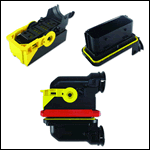The Smart Factory: Connecting Efficiency and Productivity
The intelligent networking of industrial devices promises to deliver productivity gains, but not all manufacturers are ready to make the leap to the smart factory. Connecting efficiency and productivity is key for the future of the industrial sector.
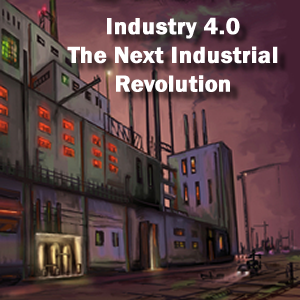 As the buzz about “Industry 4.0” grows louder, many people believe it may be just around the corner, but it has not yet become a mainstream production environment. Existing factory and process automation systems and supply chains have become highly complex but are often still based on third-generation automation protocols and equipment and proprietary networks.
As the buzz about “Industry 4.0” grows louder, many people believe it may be just around the corner, but it has not yet become a mainstream production environment. Existing factory and process automation systems and supply chains have become highly complex but are often still based on third-generation automation protocols and equipment and proprietary networks.
The intelligent networking of industrial devices – connecting the virtual with the real economy as advocated by the Industry 4.0 concept – promises to deliver more productivity gains. But not all manufacturers are ready to jump on the bandwagon just yet, as existing systems work well and replacing them can be a costly and time-consuming undertaking.
What is Industry 4.0?
The term “Industry 4.0” first appeared at the Hanover Industry Fair. It was coined as the main theme of the exhibition and highlighted the fourth industrial revolution as envisioned by German experts: After the first (mechanization), second (mass production), and third (digitization) industrial revolutions, the time has come for smart factories.
Over the past couple of decades, manufacturers have brought a lot of IT onto the factory floor to streamline and improve the design and production processes. This evolution, which includes computer-aided design and enterprise resource planning, may have reached relative maturity now. In the next step, smart factories will be characterized by adaptability, resource efficiency, and ergonomics, as well as the integration of customers and business partners in all business and value processes.
Industry 4.0, based on cyber-physical systems, refers to the interconnection of control equipment and/or networks and the real world in the form of inputs and outputs, sensors, and other detectors that may be embedded in end-user products. In other words, smart factories can be part of the Internet of Things (IoT).
Cyber-Physical Systems
Cyber-physical systems (CPS) can best be explained as “locally physical, globally virtual” –sensing and manipulation of the physical world occurs locally, while control and monitoring are enabled safely, securely, reliably, and in real time across a virtual cyber network. Apart from advanced manufacturing, CPS can be applied in the smart electric grid, smart mobility, smart buildings, smart medical technologies, next-generation air traffic management, security, and so forth.
Driven by the need to develop reliable systems for renewable energy, wireless health, advanced manufacturing, smart materials, and electrified ground and air vehicles, the research and development effort for CPS offers an unprecedented opportunity to redesign and rethink many existing concepts and systems.
Development and integration of CPS may eventually lead to “lights out” factories where manufacturing is done without on-site factory workers by using remote monitoring stations in which skilled and educated/trained workers monitor and control the processes.
The CPS trend is driven by technology that is part of Industry 4.0 and the IoT, including wireless technologies, cloud computing, Big Data processing, remote monitoring, and cyber security, and should lead to increased sustainability on the factory floor and enterprise-wide ecosystems.
How Smart is Smart Enough?
Using proprietary networks, fieldbuses, and Ethernet-based networks to connect machines and field devices is not ideal for Industry 4.0. Even with the arrival, some decades ago, of so-called open networks (DeviceNet, Profibus, CanBus, etc.) that used shared communication protocols, there are still too many limitations and compatibility issues.
Programmable logic controllers (PLCs) and process controllers follow pre-defined sequences and thus are not really intelligent. A lot of time and money has been spent to control production processes to deliver predictable quality outputs. These systems are efficient and work well, but are not creative and cannot deal with an unprecedented, unexpected event.
More intelligent machines are coming, however. The cost of sensors and network connectivity has decreased dramatically, enabling manufacturers to set up production systems that are more flexible. And as manufacturing becomes further automated and connected, greater customization will be possible. Customers will be willing to pay a premium for this as long as they can have customized products and delivery is immediate.
This also implies that in a smart factory, decisions are made at the lowest possible level. Today’s process control and automation systems collect a lot of data in a centralized point and control the process from there. In a smart factory model, each node knows everything about itself and its function and has a sufficient level of intelligence to make a “local” decision, quite similar to existing distributed control systems (DCS). Combined with crunching data on a higher level and feeding it back into the smart systems, we achieve a factory capable of optimizing its own productivity and efficiency.
As a logical next step, cyber-physical systems will eventually facilitate a “made-to-order” manufacturing environment with a minimum batch size of one. With the rise of cloud computing, the computing capability to handle Big Data at a relatively low cost, and the decreasing cost of testing and sensors, the stage is set to implement smart factories. Manufacturers will be willing to produce customized items because they will have the systems in place to verify that the product matches the order and the required quality. Without cheap sensors, connectivity and the ability to handle Big Data computing, this would not be possible on a one-to-one basis.
Essentially, in a truly smart factory, the manufacturing process becomes transparent from A to Z, and this transparency goes beyond the factory floor to the supply chain to the delivery process and stretches out to the user experience. The user provides feedback to the manufacturer, based on his/her experience with the product, on possible failures, improvements, or other issues, and this process closes the circle (closed loop process).
The arrival of smart factories may have quite a profound impact on what we manufacture and how we engineer it. It will also give the entire value chain – often, but not necessarily, managed by the manufacturer – additional tools to provide value-added services. Preventive maintenance can be customized and relatively weak parts can be redesigned while the total customer experience can be optimized from custom design to delivery and use.
Potential Threats and Challenges
Probably one of the most pressing concerns is how to guarantee the cyber security of the smart factory. If everything is connected to everything else, and we feed huge amounts of data into our manufacturing systems, how can we guarantee the integrity of this information and keep it secure?
It will quickly become a huge, complex network of cyber-physical systems, and managing it will not be easy. Many different types of disciplines will need to work together, including electrical, mechanical, chemical, and design engineers, as well as people looking at ergonomics.
Therefore, the added value of building smart factories has to outweigh the cost. At the same time, the systems must have the intrinsic flexibility and ease of use to allow other systems to join across the supply chain, across manufacturing (e.g. sub-assemblies), and across the delivery chain, including the end customer. And how can the various players exit the chain or be replaced if the circumstances demand it?
According to some analysts, there could be 25 billion things connected to the IoT over the next couple of years, and even if only a small amount of data is produced every couple of minutes, that’s still an enormous amount of data. How useful will it be? There could be great benefits in analyzing huge amounts of data related to the quality or safety of certain products, but the challenge will be to separate the valuable data from the not-so-valuable data.
Connection Technology in the Smart Factory
Connector manufacturers such as TE Connectivity are working on the development of connection technologies that meet the requirements of the smart factory. These connection technologies must be flexible and use little physical space. TE Connectivity developed contactless transmission technologies using its ARISO platform and the mini I/O connector.
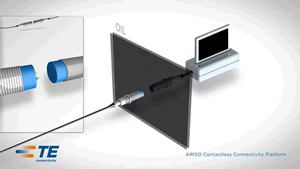 The ARISO contactless transmission platform is made up of couplers equipped with an antenna and a power coil in their front sections. Both of these components are connected to a circuit board housed in the rear part of the couplers. Data is transmitted in the 2.4GHz band and the electrical energy is transmitted using inductive coupling based on the magnetic resonance principle. To avoid interference with other wireless systems, only near-field transmissions occur. Robotics is one example of an application that can benefit from contactless connection technology, because a contactless connection has virtually no restrictions on movement.
The ARISO contactless transmission platform is made up of couplers equipped with an antenna and a power coil in their front sections. Both of these components are connected to a circuit board housed in the rear part of the couplers. Data is transmitted in the 2.4GHz band and the electrical energy is transmitted using inductive coupling based on the magnetic resonance principle. To avoid interference with other wireless systems, only near-field transmissions occur. Robotics is one example of an application that can benefit from contactless connection technology, because a contactless connection has virtually no restrictions on movement.
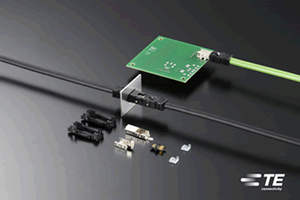 The mini I/O connector range can reach space savings of up to 75% compared to standard RJ45 solutions, according to TE Connectivity, and exemplifies the general trend toward miniaturization. The mini I/O connector has two points of contact and thus offers a more reliable and stable connection compared with a standard RJ45, which only has one.
The mini I/O connector range can reach space savings of up to 75% compared to standard RJ45 solutions, according to TE Connectivity, and exemplifies the general trend toward miniaturization. The mini I/O connector has two points of contact and thus offers a more reliable and stable connection compared with a standard RJ45, which only has one.
Additive Manufacturing
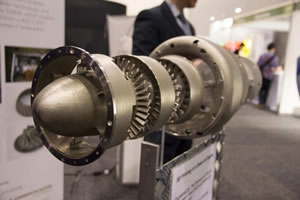
Researchers at Monash University (Australia) together with Deakin University and the CSIRO created two proof of concept jet engines — the world’s first 3D printed jet engines.
In a smart factory environment, products and processes become significantly more complicated. Additive manufacturing, or 3D printing as some call it, can now be used to make complex products directly from 3D models using simple and largely automatic procedures. Additive manufacturing is becoming both cheaper and more effective. Some believe the technology is set for a breakthrough in the manufacturing industry. New machines that can produce finished products as opposed to mere prototypes have been introduced to the market. To facilitate additive manufacturing, new industrial materials have been developed that match their conventional equivalents in terms of performance and reliability. Leading companies, like GE, are already applying this new technique. On its site, GE predicts that by 2020 the company will make 100,000 different parts by additive manufacturing. Currently, it already uses more than 300 3D printing machines.
With additive manufacturing, products could be built faster and, most important, the process could be more flexible, so that individual specifications with mass customization will result. That would trigger a revolution that could bring manufacturing, based on the smart factory concept, back to the rich and developed world, although it will not require the same workforce numbers as today’s factories.
Additive manufacturing is not likely to replace all conventional mass production anytime soon, but will nevertheless replace conventional methods in the near future for made-to-measure and difficult-to-make products. Making those parts layer by layer means that complicated shapes can be produced more easily and with a lot less material waste.
This would clearly affect the connector industry in more ways than one. Apart from new growth markets in automation, robotics, and additive manufacturing, this new way of manufacturing will apply to the production of connectors itself. Most likely, various types of connectors, especially housings and shells, would be suitable for additive production methods.
When Will We See Smart Factories?
The smart factory implementation is closer than you might think.
Car manufacturers are quite advanced and apply smart technologies in their high-end cars and in their production processes. Computer-maker Dell has already achieved a production process in which it is able to assemble very small batches, with a theoretical batch size of one, as it assembles upon customer demand. Other manufacturers are already testing and applying these smart techniques but haven’t gone public yet because of intellectual property and other competitive reasons.
In order for Industry 4.0 and the smart factory concept to become mainstream, more standardization and more transparency are required, so that the smart solutions are not restricted to proprietary implementations that limit which companies can take part. Over the next 10 years, to 2025, we expect the smart factory concept to roll out, spearheaded by companies at the high end of manufacturing, such as automotive and select consumer electronics manufacturers.
- The Industrial Market for Connectors in a Changing World - April 20, 2021
- How Key Trends in the Transportation Market Will Impact Electronics Growth - March 17, 2020
- Automation Means a Bright Forecast for Industrial Connectors - February 19, 2019


